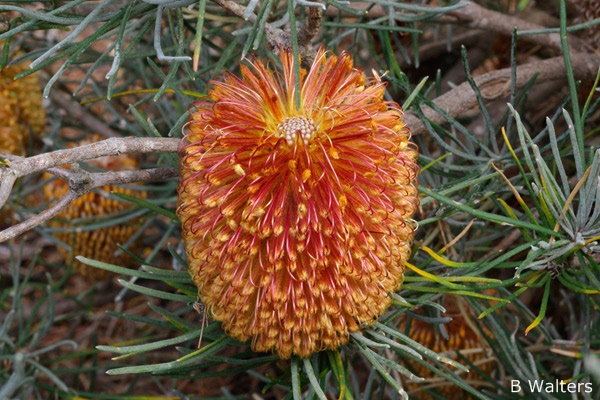General Description:
Banksia grossa is a multi-stemmed shrub to to about 1 metre high. The leaves are thick, almost succulent, and narrow linear, up to 120 mm long by 3 mm wide. The obovoid inflorescences are seen in winter to spring and are about 9 cm wide at flowering, occurring on short lateral branchlets. They are yellow-brown to orange in colour (occasionally with silvery or purpled styles) and are often held within the foliage.
This species develops a lignotuber and can regenerate by vegetative means from the lignotuber if the upper parts of the plant are destroyed by fire. It can also regenerate from seed.
Banksia grossa is not often seen in cultivation although it was probably cultivated as a form of B.sphaerocarpa prior to being formally described in 1981. It is best suited to areas with a dry summer and can be difficult to maintain in humid areas. It requires sandy, well drained soils in full sun or partial shade. It is moderately frost hardy and will tolerate hard pruning once established as it can send up new branches from the lignotuber.
Propagation from seed is reliable without pre-treatment and cuttings also succeed but may be slow to strike and success rate may be well below 100%.
* EPBC Act = Environment Protection and Biodiversity Conservation Act 1999;
ROTAP = Rare or Threatened Australian Plants (Briggs and Leigh, 1988)
For further information refer the Australian Plants at Risk page

Banksia grossa
Photo: Brian Walters
 Australian Native Plants Society (Australia)
Australian Native Plants Society (Australia)













